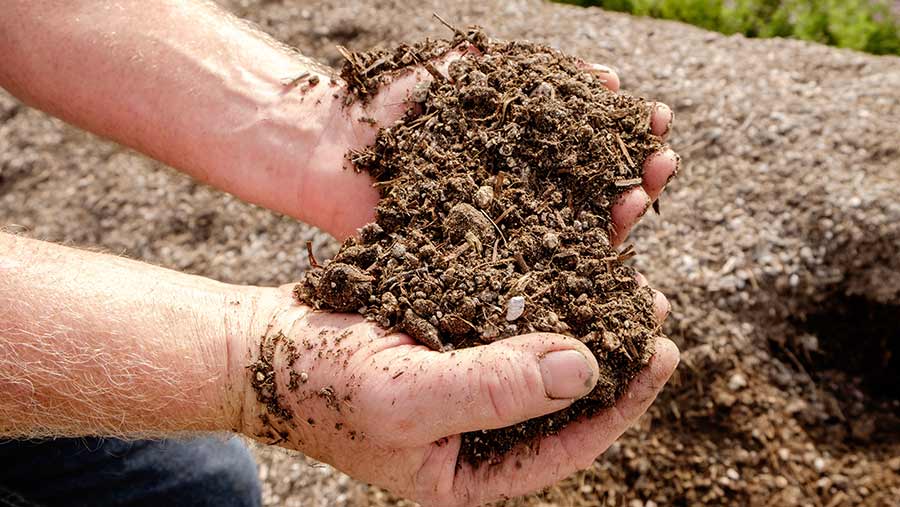Home-made compost combined with an extremely diverse rotation and minimal soil disturbance has the cut the inputs and agronomic management needed on Simon Cowell’s farm at Lawrence, near Southminster, Essex.
Fact file
Name: Simon Cowell
Problem being solved: Seedbed creation was destroying soil structure, making successful crop establishment increasingly difficult.
Approach: Moving to a system based around promoting mycorrhizal fungi, which have a symbiotic relationship with plant roots and help them absorb nutrients. No-till cultivation protects soil structure, and a diverse rotation and home-made compost supports and feeds them.
Mr Cowell has built his system around supporting the mycorrhizal fungi in the soil, an approach which has not only resulted in healthier, more resilient crops, but has also seen him crowned Soil Farmer of the Year 2018.
Having stopped cultivations at Motts Farm 12 years ago, Mr Cowell uses no seed treatments or plant growth regulators, and minimal insecticides across the 162ha of combinable and forage crops on very heavy clay soils.
Added to that, phosphate and potash applications ceased 20 years ago, nitrogen fertiliser use has fallen and most winter wheat crops receive just two fungicide applications, according to need.
He is looking to cut inputs even further through intercropping.
“We’ve got much less capital tied up in our crops now. As well as lower inputs, the machinery and labour requirement has fallen,” he says.
“That has allowed me to try new things. A bit more risk is fine with this system – we can afford to have a few failures if we learn from them.”
No-till
Mr Cowell’s inspiration comes from nature, which he describes as the perfect system for being able to correct its own problems.
He realised that no-till was the best way to have as little impact on soil health as possible.
“The driver has always been to consider what effect my actions would have on soil biology,” he explains.
“Mycorrhizal fungi are the key to healthy, stronger plants and if the soil is in the right condition, the fungi will be there.”
The discovery that cultivating breaks up the soil fungal hyphae and disrupts their function, creating a downwards spiral, was a turning point.
“Before we changed, it was becoming increasingly difficult to establish crops successfully,” says Mr Cowell. “Everything that we were doing to create seedbeds was working against having a healthy soil.
“It had become a continual process. As a result, heavy nitrogen applications had to be used to get good crop growth, which just threw everything out even further.”
Rotation


